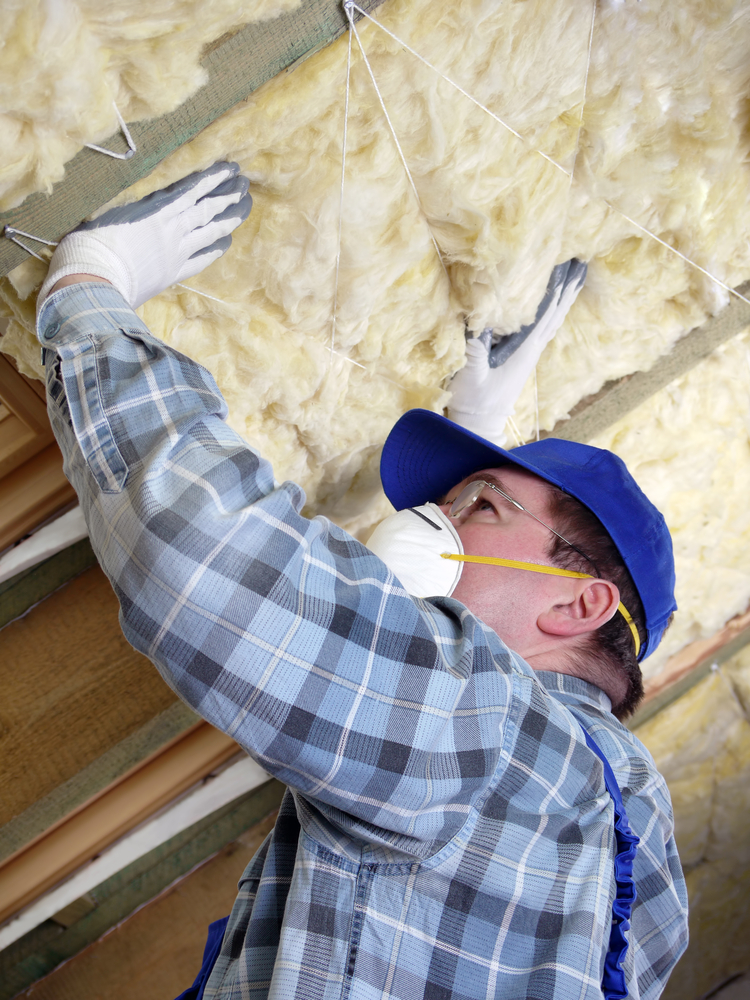Insulation Options for Attics

Attics are an important part of any home, providing storage space and shelter for the roof. However, without proper insulation, attics can also be a major source of energy loss. According to the U.S. Department of Energy, around 25% of a home's heat loss occurs through the attic. This not only leads to higher energy bills but also affects the overall comfort of the home.
There are various insulation options available for attics, each with its own set of pros and cons. In this guide, we will discuss the different types of insulation materials commonly used in attics, their benefits, and drawbacks, as well as tips for choosing the right option for your attic. So, let's dive in!
What is Attic Insulation?
Attic insulation is the process of adding a layer of material to the attic space in order to reduce heat loss and improve energy efficiency. Insulation works by creating a barrier between the interior living space and the outside environment. This helps to prevent warm air from escaping during colder months and keeps hot air out during warmer months. In addition, it also helps to regulate temperature fluctuations, making the home more comfortable and reducing the workload on heating and cooling systems.
There are various types of materials used for attic insulation, including fiberglass, cellulose, mineral wool, and spray foam. These materials come in different forms such as batts, rolls, loose-fill, or spray that can be installed in various ways depending on the type of insulation chosen.
Some factors to consider when choosing attic insulation include the R-value (a measure of thermal resistance), cost, ease of installation, and any potential health hazards. It's important to also consider the climate and location of your home as well as local building codes and regulations.
Types of Attic Insulation
There are several types of insulation materials that can be used in attics, each with its own advantages and disadvantages. Let's take a closer look at some of the most common options:
Fiberglass Insulation
Fiberglass insulation is made of tiny glass fibers and is one of the most commonly used types of attic insulation. It comes in batts or rolls that can be easily fitted between attic joists. One of the main advantages of fiberglass insulation is its relatively low cost compared to other options. It also has a high R-value, making it an effective insulator.
However, fiberglass insulation can be irritating to the skin and respiratory system if not handled properly. It also has a tendency to settle over time, reducing its effectiveness. In addition, it is not resistant to moisture and can trap condensation which can lead to mold growth.
Cellulose Insulation
Cellulose insulation is made from recycled paper products and is a popular choice for attics. It is often blown in using a machine, making it suitable for hard-to-reach areas. Cellulose insulation has a higher R-value than fiberglass and is also more resistant to air leaks.
However, it can be a fire hazard if not treated with fire-retardant chemicals. There have also been concerns about the potential health hazards of cellulose insulation, as it may contain chemicals such as borates or formaldehyde. It may also settle over time, reducing its effectiveness.
Mineral Wool Insulation
Mineral wool, also known as rock wool or slag wool, is made from molten glass or industrial waste products. It comes in batts or loose-fill form and is popular for its fire-resistant properties. It also has a high R-value and is resistant to moisture, making it suitable for attics.
However, mineral wool can be more expensive than other insulation options and may require professional installation. It can also be irritating to the skin and respiratory system if not handled properly.
Spray Foam Insulation
Spray foam insulation is made from a mixture of chemicals that expand and harden when sprayed. It creates an effective air and moisture barrier, making it one of the most efficient types of attic insulation. It can also be sprayed into small crevices, making it ideal for insulating irregularly shaped attics.
However, spray foam insulation is the most expensive option on this list and may require professional installation. It also contains chemicals that can be harmful to the environment and should be handled with caution.
Pros and Cons of Attic Insulation
Here is a summary of the pros and cons of each type of attic insulation:
Fiberglass:
Pros:
- Low cost: Fiberglass insulation is one of the most affordable options available.
- High R-value: It provides good thermal resistance, making it an effective insulator.
Cons:
- Irritating: Handling fiberglass insulation can be irritating to the skin and respiratory system.
- Settling: Over time, fiberglass insulation may settle, reducing its effectiveness.
Cellulose:
Pros:
- Eco-friendly: Cellulose insulation is made from recycled materials.
- Good R-value: It has a high thermal resistance, making it an efficient insulator.
Cons:
- Fire hazard: If not treated with fire-retardant chemicals, cellulose can be a potential fire hazard.
- Health concerns: There have been concerns about the potential health hazards of cellulose insulation.
Mineral Wool:
Pros:
- Fire-resistant: Mineral wool has excellent fire-resistant properties.
- High R-value: It provides good thermal resistance, making it an effective insulator.
Cons:
- Expensive: Mineral wool tends to be more expensive than other options on this list.
- Irritating: Handling mineral wool can be irritating to the skin and respiratory system.
Spray Foam:
Pros:
- Efficient: Spray foam insulation creates a tight air and moisture barrier, making it the most efficient option on this list.
- Versatile: It can be sprayed into small crevices and irregularly shaped attics.
Cons:
- Expensive: Spray foam insulation is the most expensive option on this list.
- Environmental concerns: It contains chemicals that can be harmful to the environment and should be handled with caution.
Benefits of Proper Attic Insulation
It can help improve the overall energy efficiency of your home. By preventing air leaks and heat loss, proper attic insulation can reduce your heating and cooling costs. It can help regulate the temperature in your home. With good insulation, your home will be cooler in the summer and warmer in the winter, making it more comfortable for you and your family.
Also, the right insulation can protect your home from moisture and mold buildup. By creating a barrier against moisture, it helps prevent damage to your home's structure and potential health hazards. Proper attic insulation can also reduce noise pollution, making your home quieter.
In addition, proper attic insulation is important for meeting building codes and regulations. Insufficient or incorrect insulation may result in fines or even the need for costly repairs. It can also increase the resale value of your home, as buyers are often looking for energy-efficient and well-insulated properties.
But perhaps most importantly, proper attic insulation can contribute to a more sustainable future by reducing carbon emissions and energy consumption. By investing in good insulation, you are not only saving money in the long run but also doing your part in protecting the environment.
Does Attic Insulation Need to Be Replaced?
Attic insulation does not necessarily need to be replaced, but it may need to be topped up or supplemented over time. This is especially true if the insulation has settled, become damaged by moisture, or was installed incorrectly.
Inspect your attic regularly for any signs of damage or wear and tear on the insulation. Check for any air leaks or drafts that may indicate insufficient insulation. If you notice any issues, it is best to consult a professional for advice on whether the insulation needs to be replaced.
Additionally, if you are renovating your home or adding an addition, it is important to reassess your attic insulation needs. The added space may require additional insulation in order to maintain the energy efficiency and comfort of your home.
In general, it is recommended to replace attic insulation every 15-20 years. However, this timeline may vary depending on factors such as climate, type of insulation used, and proper maintenance. Regularly inspecting and maintaining your attic insulation can help prolong its lifespan and ensure that your home remains well-insulated for years to come.
Mistakes to Avoid When Insulating Your Attic
Proper attic insulation is essential for maintaining the energy efficiency and comfort of your home. However, there are some common mistakes that homeowners make when insulating their attics that can lead to issues down the road.
Here are some mistakes to avoid when insulating your attic:
- Ignoring air leaks: It is important to address any air leaks in your attic before adding insulation. Otherwise, the insulation will not be as effective, and you may end up with drafts and higher energy bills.
- Not using the right type of insulation for your climate: Different types of insulation have different R-values, which measure thermal resistance. It is important to choose the right type of insulation for your climate in order to maximize energy efficiency.
- Choosing the wrong thickness or density: The thickness and density of insulation can also affect its effectiveness. Make sure to consult a professional or do your research before choosing the right amount of insulation for your attic space.
- Not sealing around electrical outlets and fixtures: It is important to properly seal around any electrical outlets, light fixtures, or other openings in the attic before insulating. This will prevent air leaks and ensure that the insulation is effective.
- Not properly ventilating the attic: Proper ventilation is crucial for preventing moisture buildup and maintaining good air quality in your home. Make sure to install proper vents or exhaust fans in your attic before adding insulation.
By avoiding these common mistakes, you can ensure that your attic insulation is properly installed and will provide long-lasting benefits for your home.
Do You Research Before Insulating Your Attic
Insulating your attic is an important home improvement project that can have a significant impact on the energy efficiency and comfort of your home. However, before starting this project, it is important to do your research and make informed decisions.
First, consider the climate you live in. Different types of insulation have different R-values and may be more suitable for certain climates. For example, homes in colder climates may benefit from higher R-value insulation to prevent heat loss. Next, consider the type of attic you have. If your attic is unfinished or has a flat roof, it may require different insulation methods compared to an attic with angled ceilings and rafters.
Additionally, think about any potential air leaks or moisture issues that may need to be addressed before insulating. This could include sealing any openings, fixing damaged insulation, or installing proper ventilation. It is also important to research your local building codes and regulations regarding attic insulation. Some areas have specific requirements for the type and amount of insulation needed in homes.
Tips for Choosing the Right Attic Insulation
Choosing the right attic insulation is crucial for maximizing energy efficiency and ensuring a comfortable living space. Here are some tips to help you make the right decision:
- Consider your climate: As mentioned before, different types of insulation have different R-values. Research which type of insulation is best suited for the climate you live in.
- Think about the type of attic: The type and layout of your attic will also play a role in determining which insulation is most suitable. Consider factors such as the size, shape, and angle of the ceiling before making a decision.
- Choose high-quality materials: Investing in good quality insulation can save you money in the long run. Look for materials that are durable, fire-resistant, and have a high R-value.
- Consider your budget: While it is important to choose quality materials, it is also important to consider your budget. Some types of insulation may be more expensive than others, so make sure to compare prices and factor in the size of your attic space.
- Consult a professional: If you are unsure about which insulation to choose or how much you need, it is always best to consult a professional. They can provide expert advice and ensure that the insulation is installed correctly.
By following these tips and doing your research, you can make an informed decision when choosing attic insulation and reap the benefits of a well-insulated home.
Contact Koala Insulation for Your Attics Needs
If you are in the St. Petersburg Areas and looking for top-quality attic insulation services, look no further than Koala Insulation. Our team of experienced professionals will provide prompt and efficient service to ensure your home is well-insulated and comfortable all year round.
Our range of services includes blown-in attic insulation, spray foam insulation, solar attic fans, air sealing, insulation removal, and batt insulation installation. We also cater to residential, commercial, and industrial projects.
We use top-quality products from trusted brands such as Johns Manville, Applegate, Owens Corning, GreenFiber, and more. With our focus on customer satisfaction, we offer financing options to make your insulation project more affordable.
Our Services areas in the St. Petersburg region include Clearwater, Largo, Belleair Beach, Safety Harbor, Dunedin, Indian Rocks Beach, and surrounding areas. Call us at (727) 416-6702 or visit our website to book your free insulation evaluation today.
Experience the Koala Insulation difference and enjoy a well-insulated, energy-efficient, and comfortable home all year round!
FAQs
What are the main differences between loose fill insulation and fiberglass batt insulation for attics?
Loose fill insulation, often made from materials like cellulose, fiberglass, or mineral wool, is designed to be blown into place, filling nooks, crannies, and irregular spaces effectively. This type of insulation is ideal for attics with hard-to-reach areas or irregular joist spacing. On the other hand, fiberglass batt insulation comes in pre-cut panels that fit between standard spacing of attic or wall joists and studs.
How do I choose the best attic insulation types for my home?
Choosing the best attic insulation depends on several factors, including your climate, the current level of insulation, and the attic's structure. Loose fill and blown-in fiberglass insulation are excellent for filling irregular spaces and achieving a high R-value per inch. Fiberglass batts might be preferable for DIY projects due to their ease of installation.
Can blown-in fiberglass insulation also act as a vapor barrier in my attic?
Blown-in fiberglass insulation primarily provides thermal insulation by trapping air within its fibers, which reduces heat flow in and out of your attic. However, on its own, it does not function as a vapor barrier. A vapor barrier is specifically designed to prevent moisture from passing through it, which is important in preventing mold and water damage in your attic.
Why is it important to consider the insulation material's R-value when selecting attic insulation?
The R-value of an insulation material measures its ability to resist heat flow, with higher values indicating greater insulation power. When selecting attic insulation, it's crucial to choose a material with an appropriate R-value for your climate and energy efficiency goals. Higher R-value materials will better insulate your home, keeping it warmer in the winter and cooler in the summer, and can lead to significant savings on heating and cooling costs.
Conclusion
Attic insulation is an important aspect of maintaining a comfortable and energy-efficient home. By regularly assessing and maintaining your attic insulation, avoiding common mistakes, and making informed decisions when choosing the right materials, you can ensure that your home remains well-insulated for years to come.
Remember to consult a professional if you have any doubts or questions about installing or replacing attic insulation. Stay warm and save energy with proper attic insulation! So, it is crucial to regularly maintain your attic insulation to ensure its effectiveness and prolong its lifespan. This can also help you avoid costly repairs or replacements in the future.
With these tips and precautions in mind, you can make sure that your attic insulation is properly installed and provides long-term benefits for your home. Keep your home comfortable and energy-efficient with well-maintained attic insulation.
Find Your Location


Get a quote



